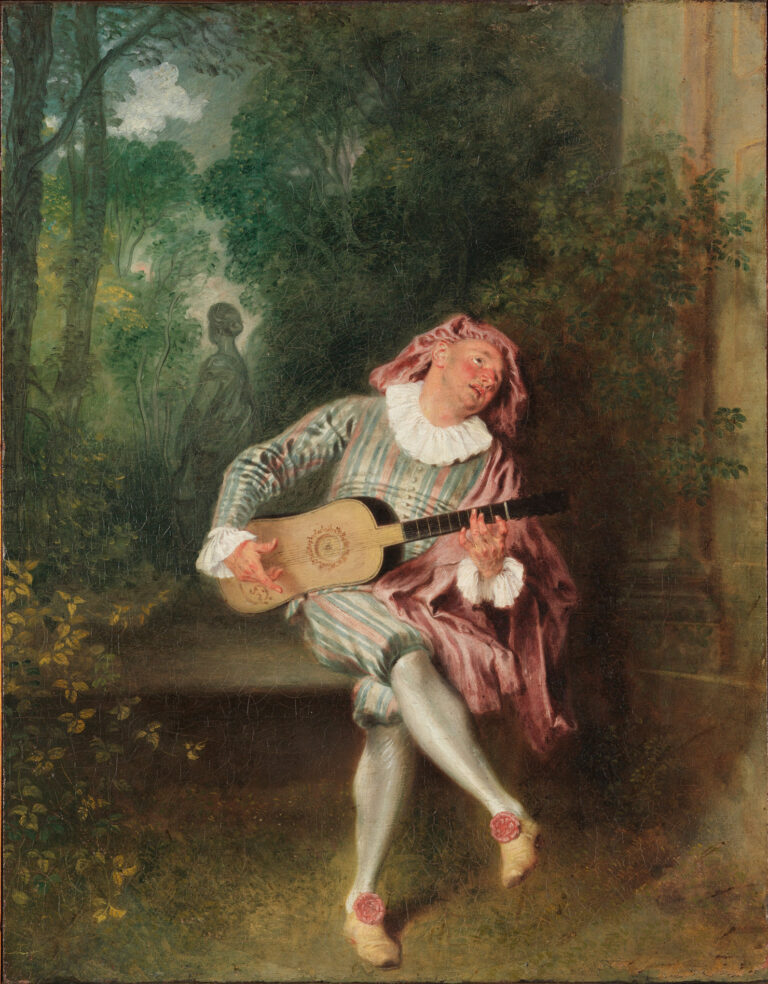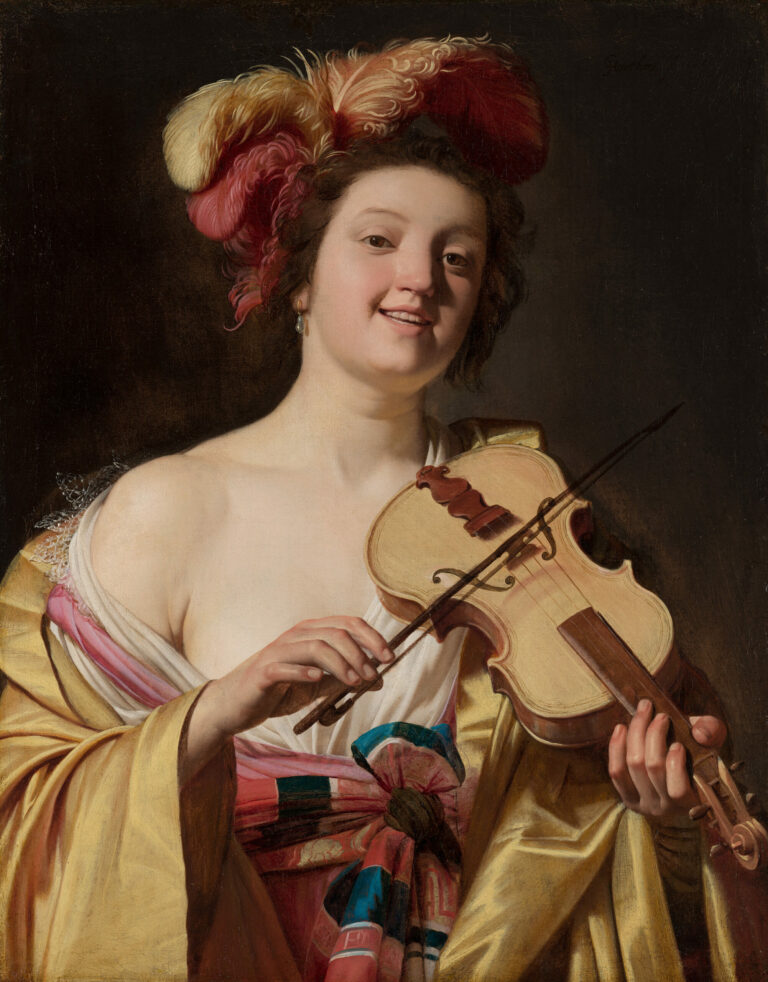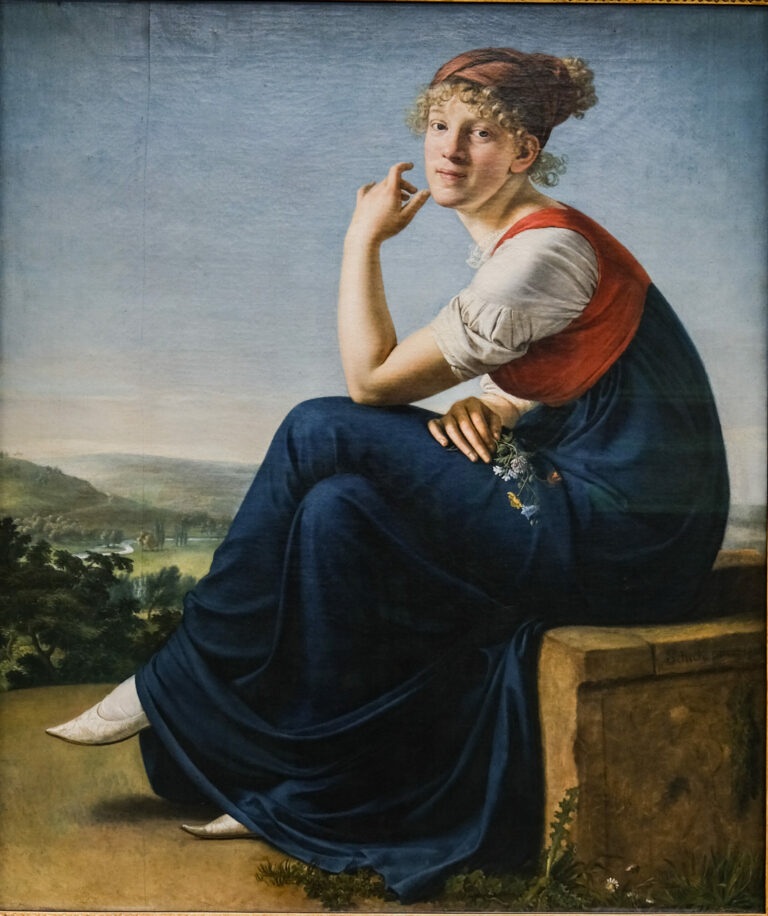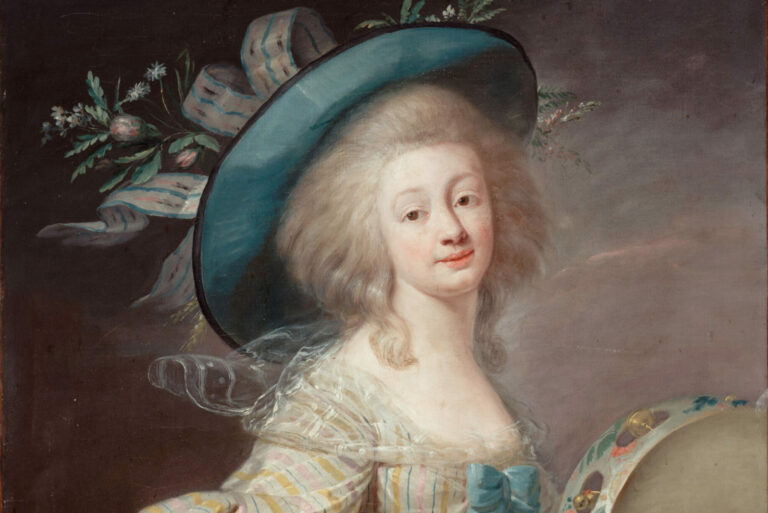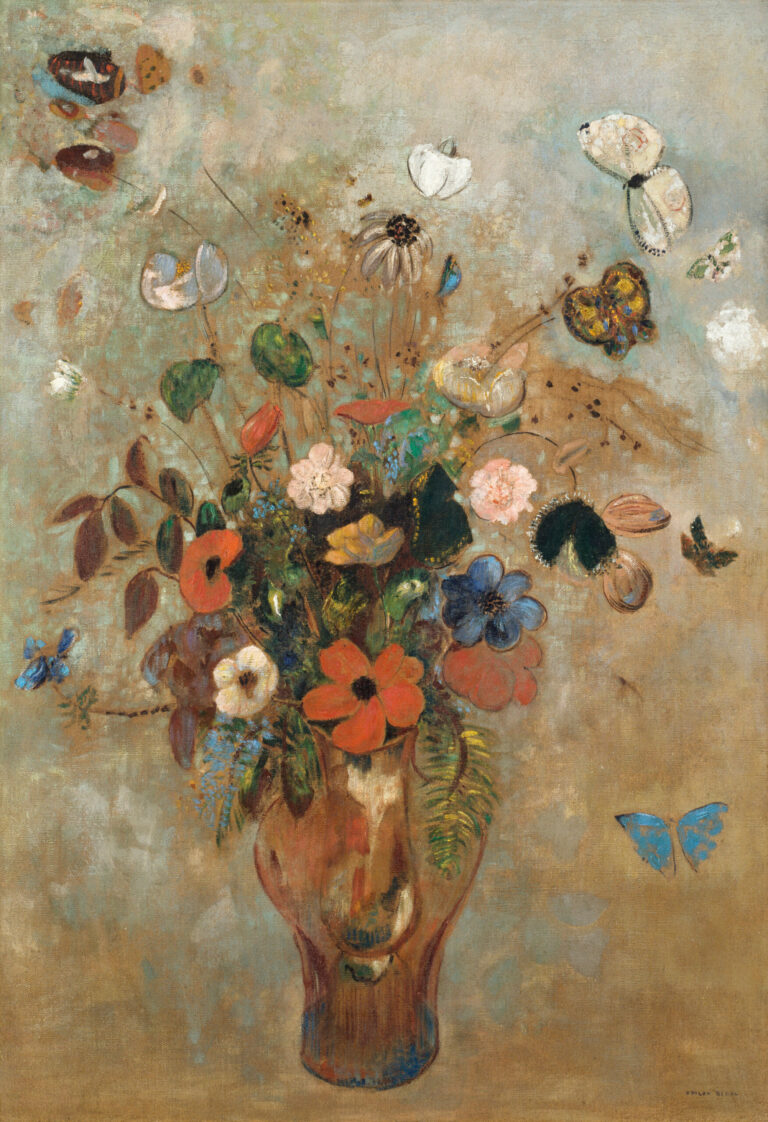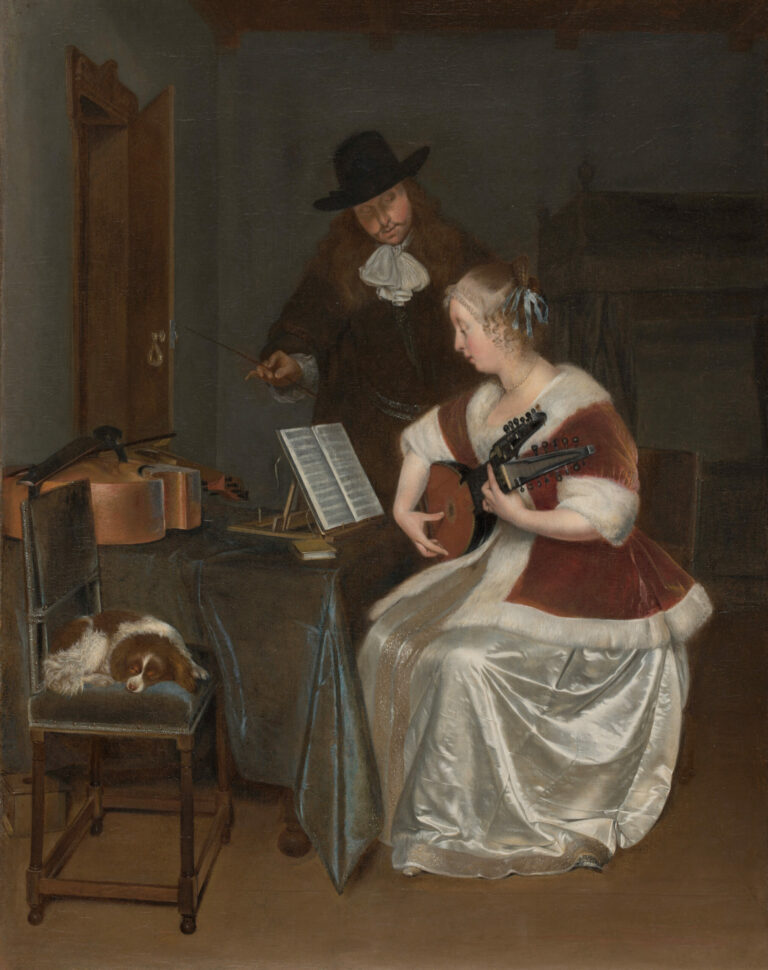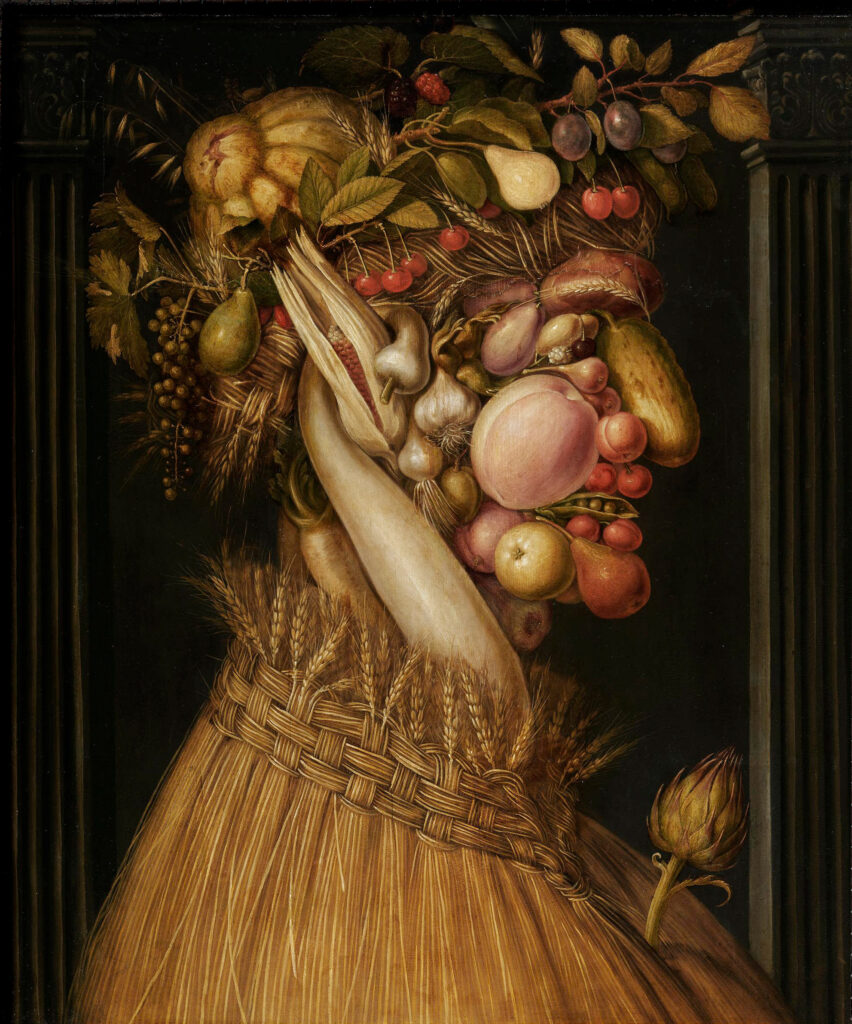
Milan, 1550s. Arcimboldo invents an unprecedented pictorial genre: transforming the human face into a botanical enigma. To represent Summer, he composes a portrait made entirely of ripe fruits, grains, and vegetables.
A Face in Full Maturity
Look at this profile turned to the right. The nose? A vegetable. The cheek? A plump peach. The eye? A shiny black cherry. Arcimboldo stacks wheat ears, plums, pears, and peas with a goldsmith’s precision. Each element finds its anatomical place: wheat ears form the neck, a pear shapes the chin. The oil-on-wood technique enables this unsettling realism. Warm colors evoke summer abundance. The garment? A woven straw construction, a living basket containing its own harvest.
Between Scientific Curiosity and Symbolism
This work emerges from Renaissance Italy, an era fascinated by natural classifications. Cabinets of curiosities accumulated botanical specimens and exotic rarities. Arcimboldo responds to this thirst for knowledge by creating visual encyclopedias. Summer personifies agricultural zenith, nature’s generosity. These seasonal allegories also celebrate power: a prince who masters natural cycles controls prosperity. The painter extends the medieval tradition of hybrid creatures while updating it through naturalist observation.
Arcimboldo, A Milanese Virtuoso
Giuseppe Arcimboldo (1526-1593) begins his career as a stained-glass window designer at Milan Cathedral. He then becomes official painter to the Habsburgs in Vienna and Prague. His genius? Fusing courtly portraiture with still life. He invents a unique playful Mannerism.
💭 What if these fruits composed your own summer face? Which seasonal elements would best represent you?
About this work
- Allegory of Summer, Giuseppe Arcimboldo, circa 1555-1560, Alte Pinakothek, Munich
- Oil on wood, 68.3 × 56.7 cm
- Bavarian State Painting Collections – Alte Pinakothek, Munich
- https://www.sammlung.pinakothek.de/de/artwork/ZKGPQ3J4gA/giuseppe-arcimboldo/allegorie-der-sommer

